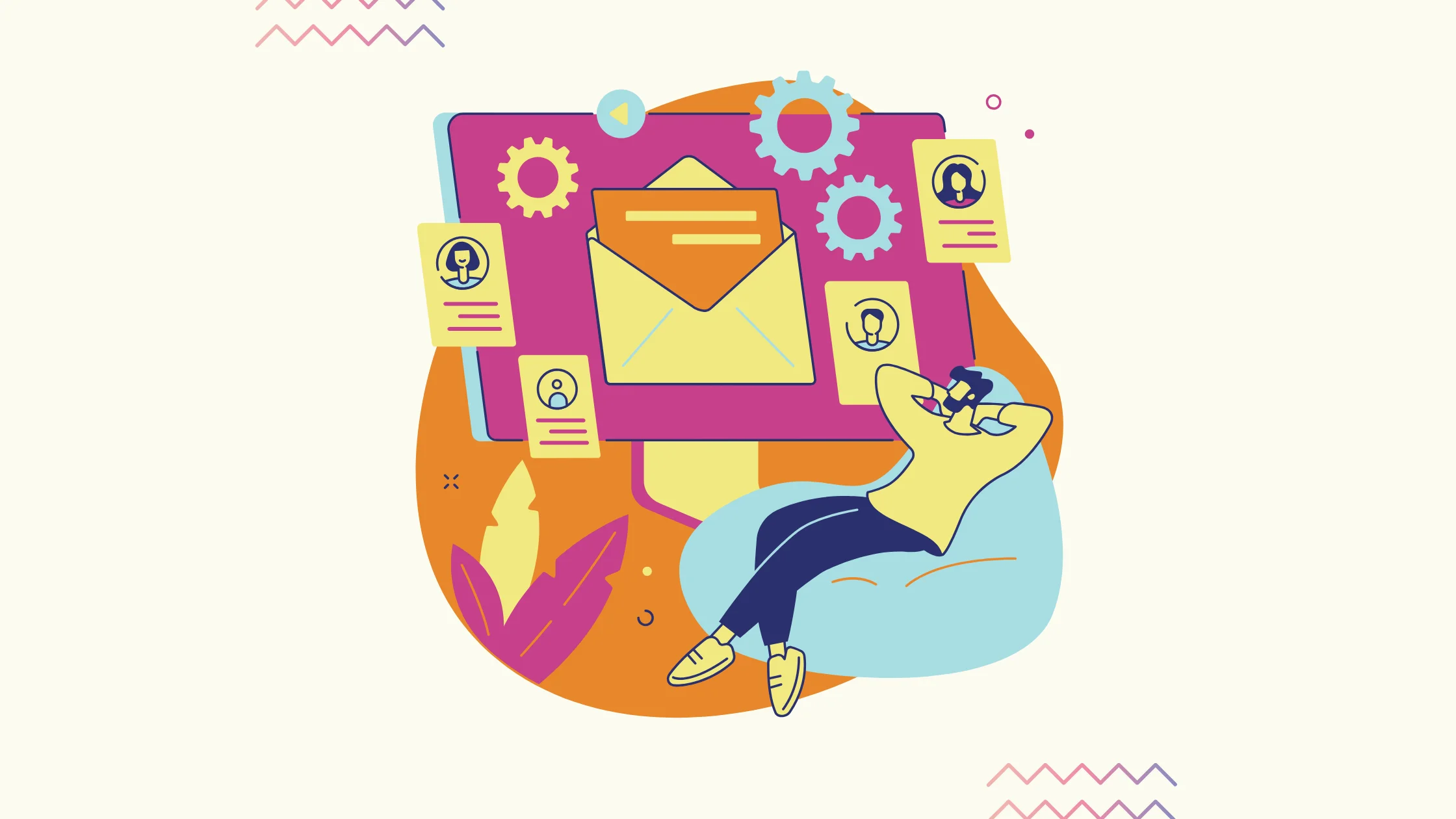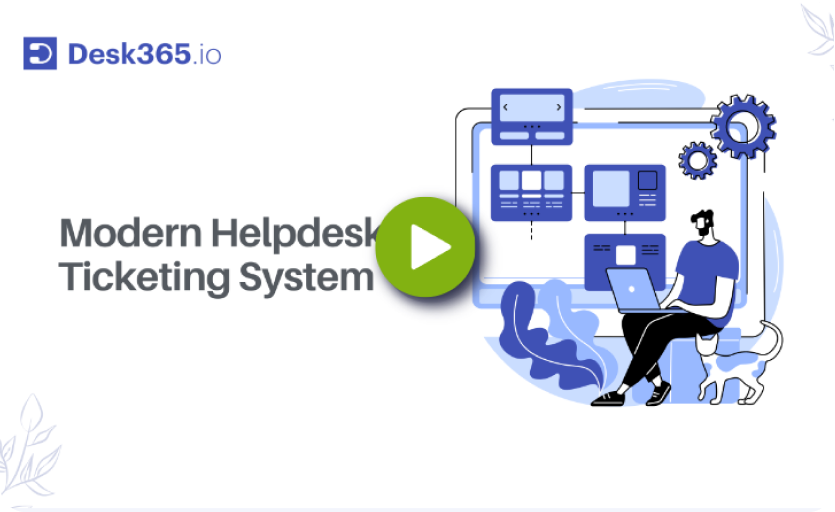Did you know that businesses that respond to customer service emails within one hour are 7 times more likely to convert a lead into a customer?
Writing effective customer service emails is an essential skill for any business that aims to succeed in today’s competitive market. With the rise of online communication, email has become the primary mode of communication between businesses and customers.
Therefore, it is crucial to know how to write emails that are professional, clear, and effective in addressing customer concerns.
In this article, we will explore some essential tips for writing customer service emails that are engaging, professional, and effective.
What are customer service emails?
Customer service emails are a form of written communication between a business and its customers. They are a vital component of customer support, as they provide a convenient touchpoint for customers to voice their concerns, ask questions, or request assistance.
Customer service emails can take many forms, including responses to customer enquiries, complaints, feedback, or requests for information. They are often used to provide support for products or services, answer questions about orders, or resolve issues related to billing, shipping, or returns.
Effective customer service emails should be clear, concise, and easy to understand. They should provide customers with the information they need to resolve their issues or answer their questions in a timely and professional manner.
To write effective customer service emails, it is important to understand the needs and expectations of your customers. This includes understanding their language, tone, and level of technical expertise.
13 tips for writing better customer service emails
Writing effective customer service emails is essential for building strong relationships with customers and ensuring their satisfaction. Here are some tips for writing better customer service emails:
Connect with your customers
When writing customer service emails, it’s important to remember that you’re communicating with another human being. Avoid using overly formal language or jargon, and try to inject some personality into your responses. Use conversational language and show empathy for the customer’s situation. This helps to establish a connection with customers and makes them feel more at ease.
Respond quickly and effectively
Responding to customer emails promptly is vital for delivering good customer service. Strive to reply within a reasonable timeframe, ideally within 24 hours. If a resolution takes longer, acknowledge the email and provide a quick update to reassure the customer that their query is being addressed. Timely responses demonstrate that you respect their time and concerns.
Apologize when necessary
If a customer is unhappy with your product or service, it’s important to write an apology mail to the client and acknowledge any mistakes made. Take responsibility for the issue and assure the customer that you understand their frustration. By offering a genuine apology, you show empathy and a willingness to make things right, which can go a long way in resolving the customer’s concerns.
Get to the point
When responding to customer requests, it’s crucial to gather all the relevant information upfront. This includes details such as order numbers, account information, and specific issues the customer is facing. By obtaining the necessary information at the beginning of the conversation, you can save time and provide a more accurate and efficient response, minimizing the need for follow-up emails or additional back-and-forth.
Don’t take It personally
In the world of customer service, negative feedback and complaints are bound to happen. It’s essential to remind your team not to take these criticisms personally. Instead, encourage them to view customer complaints as an opportunity to improve and showcase their problem-solving skills. By maintaining a calm and professional demeanor, your team can focus on addressing the customer’s concerns and finding suitable solutions, ultimately fostering a positive customer experience.
Foster consistency
Ensure that all members of your team are aligned in terms of processes, information, and tone when communicating with customers. This consistency helps build trust and reliability. It’s important to establish clear guidelines, provide training, and maintain open lines of communication within the team to ensure everyone is on the same page. By providing a consistent customer experience, you enhance customer satisfaction and loyalty.
Share helpful resources
When addressing customer enquiries, go the extra mile by providing additional resources or relevant information that can assist the customer. This might include links to knowledge base articles, FAQs, video tutorials, or downloadable guides. By sharing these resources, you demonstrate your commitment to helping the customer and empower them to find solutions independently.
Mirror the customer's tone
When replying to customer enquiries, pay attention to the tone and language they use in their messages. Adapt your response accordingly to establish rapport and create a comfortable communication environment. If the customer is casual and informal, you can adopt a similar tone. Conversely, if the customer is more formal, maintain a professional tone. By mirroring the customer’s tone, you can establish a connection and make them feel understood, which contributes to a personalized customer service interaction.
Follow up proactively
Don’t consider the customer interaction complete after resolving their initial enquiry. Instead, make it a point to proactively follow up with the customer to ensure their satisfaction. A simple email or phone call asking if they are happy with the resolution or if there is anything else you can assist them with demonstrates your commitment to their needs. By taking this extra step, you not only provide excellent customer service but also show the customer that their satisfaction is a top priority.
Address all customer queries
When responding to customer enquiries, it’s crucial to address each and every question they have raised. Take the time to thoroughly understand their concerns and provide comprehensive answers. By ensuring that no questions are left unanswered, you reduce the risk of customer confusion or frustration. This attention to detail and commitment to resolving their issues will leave a positive impression and enhance customer satisfaction.
Enhance readability
When composing customer service emails, consider the readability of your message. Utilize formatting techniques such as bullet points, bold text, and tables to organize information and highlight key details. This enhances the visual appeal of your email and makes it easier for the customer to skim through and locate important information quickly. By making your emails visually appealing and easy to read, you improve the overall customer experience and ensure that important details are not overlooked.
Utilizing pre-written replies
Canned replies can be a valuable tool for efficiently handling common customer enquiries. Develop a library of canned responses templates that address frequently asked questions or standard issues. However, it’s crucial to customize these canned replies to suit the specific needs of each customer. Take the time to personalize the response and address any unique aspects of their enquiry. By using canned responses as a starting point and tailoring them to each customer’s situation, you can provide timely and consistent support while still maintaining a human touch.
Review and revise
Before sending any customer service emails, always take the time to proofread and edit them for clarity, accuracy, and professionalism. Check for grammatical errors, typos, and inconsistencies. Ensure that your message flows smoothly and is easy to understand. This extra step demonstrates attention to detail and a commitment to delivering high-quality customer service. By sending error-free emails, you maintain a professional image and avoid misunderstandings that could impact the customer experience.
Overall, customer service emails are an important part of any business’s customer support strategy. By providing customers with timely and effective support, businesses can build trust and loyalty with their customers, and improve their overall customer satisfaction.
Recommended Reading: How to Improve Customer Service Response Times?
Customer service email templates and examples
When it comes to writing effective customer service emails, having a set of templates and examples can save time and ensure consistency in responses. Here are some common scenarios and corresponding email templates that can be used as a starting point:
Feature request
Thank you for your suggestion to add [Feature Request]. We appreciate your feedback and are always looking for ways to improve our product/service. While we cannot guarantee that all feature requests will be implemented, we will certainly consider it for future updates.
Best, [Your Name]
Acknowledgement of receipt
Thank you for contacting us regarding [Issue]. We have received your message and are actively working on a solution. We appreciate your patience and will follow up with you as soon as possible.
Best, [Your Name]
Request for additional information
Thank you for contacting us regarding [Issue]. In order to better assist you, could you please provide us with [More Information]? This will help us to understand the situation and provide a more accurate response.
Best, [Your Name]
Request for a refund
Thank you for your request for a refund. We apologize for any inconvenience this may have caused and will process your refund as soon as possible. Please note that it may take [Timeframe] for the refund to appear on your account.
Best, [Your Name]
Responding to multiple enquiries
Thank you for reaching out with your questions regarding [Topic]. In response to your questions:
[Question 1]: [Answer 1] [Question 2]: [Answer 2] [Question 3]: [Answer 3]
Please let us know if you have any additional questions or concerns.
Best, [Your Name]
Responding to negative feedback
Thank you for your feedback regarding [Topic]. We apologize for any negative experience you may have had and would like to work with you to find a solution. Could you please provide us with more information about the situation so we can better understand and address your concerns?
Best, [Your Name]
Providing a status update
We wanted to provide you with an update on the status of [Issue]. We are still actively working on a solution and will provide an update as soon as we have more information. We appreciate your patience and understanding.
Best, [Your Name]
Requesting customer feedback
Thank you for your recent purchase/interaction with us. We value your feedback and would appreciate it if you could take a moment to complete a brief survey about your experience. Your feedback will help us to improve our product/service and better serve our customers in the future.
Best, [Your Name]
Recommended Reading: 11 Email Templates for Writing the Perfect Thank You Note for Customers
Conclusion
In conclusion, writing effective customer service emails is a crucial aspect of any business that wants to maintain a good relationship with its customers.
If you’re looking to create top-notch customer service that leaves your users feeling satisfied, Desk365’s email ticketing system is the perfect customer service solution for you.
With our impressive array of features, including canned response templates, customer contacts, shared inbox, collaboration and automation capabilities, Desk365 can help you resolve customer issues quickly and efficiently.
By leveraging these tools, you’ll be able to improve the quality of your customer service emails, build stronger relationships with your customers, and ultimately drive more business growth.
So why wait? Sign up for a 21-day free trial of Desk365 today and start creating amazing customer service experiences for your users!
Frequently asked questions
Customer service emails are written communication between a business and its customers, addressing inquiries, issues, and feedback to provide support and build positive relationships.
Responding quickly shows respect for customers’ time and concerns, helps to resolve issues efficiently, and increases the chances of converting leads into satisfied customers.
Use canned responses for common questions to save time, but personalize them to the specific context of each customer’s query for a human touch.
Desk365’s features like canned responses, unified inbox, automation, and collaboration tools streamline email responses, helping businesses resolve issues faster and more effectively.
Yes! Desk365 offers a 21-day free trial to help you explore its customer service solutions and enhance your email support.









